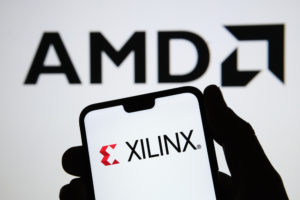
AMD Previews 400 Gig Adaptive SmartNIC SOC at Hot Chips

(Ascannio/Shutterstock)
Fresh from finalizing its acquisitions of FPGA provider Xilinx (Feb. 2022) and DPU provider Pensando (May 2022), AMD previewed what it calls a 400 Gig Adaptive smartNIC SOC yesterday at Hot Chips. It is another contender in the increasingly crowded and blurry smartNIC/DPU space where distinguishing between the two isn’t always easy.
The motivation for these device types, presented by Jaideep Dastidar, who joined AMD from Xilinx, closely resembles presentations made by Nvidia, Intel, and others in recent years. Host CPUs are overworked with housekeeping chores (networking, storage, security tasks). This is complicated by increasing performance and bandwidth demands, the disaggregation of resources, and rise of software defined everything.
Dastidar said, “[The] reason for moving towards smartNICs and DPUs [is] it all started with the movement in the industry towards software defined networking, which quickly expanded to software defined storage, and before you knew it, you had software defined everything. Meanwhile, the relentless march of speeds and feeds continue, network bandwidths have rapidly increased 25, 50, 100, 200 gig. And the level of virtualization has also expanded ones where you have VMs and the single digits (VMs) has already moved up to the 10s and with containerization, you’re dealing with 1000s of virtual entities.
“All of this resulted in a situation where you had an overburdened CPU. So where the CPU instead of running multi-tenant applications, was absorbed by running datacenter infrastructure. So, to the rescue came smartNICs and DPUs, because they help offload those workloads from the host CPU, and then the host CPU can go back to focusing on multi-tenant cloud applications.”
This is, by now, a familiar message. It will be interesting to watch how the market evolves. AMD is promoting its smartNIC as a flexible efficient SOC that leverages fixed logic ASIC technology where appropriate, more flexible programmable logic (FPGA) where appropriate, and embedded processor cores. AMD, of course, is positioning itself as a strong provider of all three types of technology (ASIC, FPGA, and CPU/core).
Like others, AMD is also baking advanced security management into its system. Use cases are potentially quite varied spanning network management, storage management, and security. Support of CXL 2.0 was notable.
To read the rest of the story, head on over to HPCwire.































